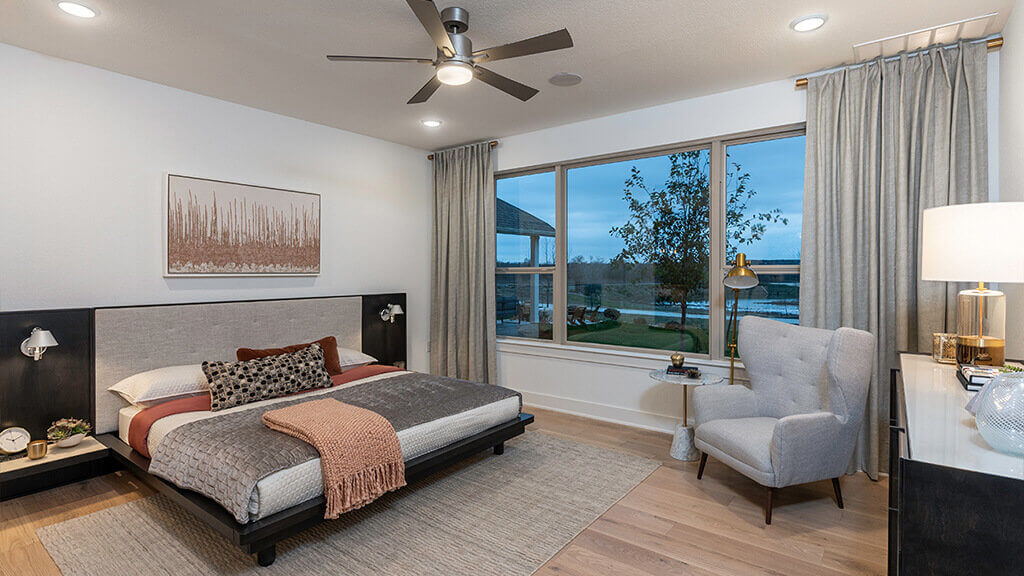Sometimes, getting a home loan can feel like your first day in algebra class all over again. There’s a thick book with nothing but fancy words, tricky phrases, and calculations—and a teacher in a suit sitting across the table saying, “You get this, right”.
And even though you’re still confused, you know if you want the house, you have to borrow the money, so you whip out the pen and sign blindly.
Instead of doing that, just give us 5 minutes. We’ll help try to explain APR so you can understand what all those calculations and numbers mean, and what you’re paying to borrow the money for your new home.
And unlike that algebra class, this is something you’ll actually use in life.
(Sorry algebra teachers, you know it’s true.)
Home Loan Basics
To understand the Annual Percentage Rate (APR) and the role it plays in your home loan calculation, you first need to ask a few questions about the loan:
- How much are you borrowing from the bank to buy the house? (This is the principal)
- What fees and loan costs are associated with borrowing that money? (Legal fees, processing fees, appraisal costs, closing costs, etc.)
- Are you going to pay discount points to buy down the rate? We’ll provide a more detailed explanation below.
- Once you have those questions answered, we’re ready to delve into the specifics of your home loan rate. Most people have a pretty good understanding of what the interest rate means and how it works, but there’s another rate you typically see on mortgage loans, usually just after the interest rate, that leaves people scratching their heads—the APR.
What is APR?
APR is the abbreviation for Annual Percentage Rate. Essentially, this rate reflects the total cost you pay to borrow money, including the initial interest rate as well as other charges associated with taking out a loan such processing fees, appraisals, and closing costs.1 Doesn’t sound so scary when you put it that way, does it?
It’s simply the loan’s interest rate and all fees needed to establish and maintain the loan rolled into one annual percentage rate.
That is really all there is to the APR. Now, different lenders include different fees in the APR, which will affect the overall rate, so you need to ask your lender up front what fees they include in the APR—that way, you can compare mortgage loans apples-to-apples.
As long as you understand the components that make up the APR, you’ll have a leg up on understanding why that specific APR is being estimated for your loan.
No matter what APR the lender is advertising, you’ll be able to break it down into the individual components to see how good the rate really is and if you are really ready to sign on the dotted line.
Buying Down Points
If you’re looking to reduce the interest rate on your loan, you can pay fees directly to the lender at closing—called mortgage points or discount points—in exchange for a reduced interest rate over the life of the loan. This is known as “buying down points” or “buying down the rate” and can help lower your monthly mortgage payments.
1 Point Costs 1% of Your Mortgage Amount
To break this down, say you have a $300,000 loan at a 5% interest rate. If you wanted to buy down to a 4.75% interest rate, your loan officer may let you know it will cost 1 discount point, or 1% of your loan amount. That means you’d need to pay $3,000 out of pocket at closing to get the reduction you’re after. The monthly savings on payment, in this example, would be $45.52 per month.
In a lot of instances, buying down points or paying thousands out of pocket up front may not be feasible for your budget or even a smart financial move. In fact, buying down points is only beneficial if you plan to own the home for a specific period of time as that’s when the points help you save on interest. If you sell your home within a few years, you’ll end up spending more paying for the upfront discount points. In our example, paying $3000 upfront in order to save $45.52 per month, you would want to know you will be in your home for at least 5.5 years before beginning to reap benefits of savings vs. upfront cost.
Taylor Morrison, in partnership with our affiliated lender, Taylor Morrison Home Funding, is offering a solution that gives you the benefits of buying down the rate whether you stay in your home for three years or thirty.
2-1 Temporary Buydown Offer
As we went over above, buying discount points typically reduces the interest rate over the life of the loan. However, with our 2-1 Temporary Buydown offer, you’ll get reduced interest for the first 2 years of your loan, and then you’ll pay the initial agreed-upon interest rate for the remainder of the loan, years 3-30.
Different from a standard rate buy down, once the two years of the temporary buy down are over, the initial note APR will resume and you’ll be responsible for the full payment throughout the rest of the loan term.3
Learn more about our 2-1 Temporary Buydown Offer here.
Get a Home Loan with Confidence
Now when you’re sitting with your loan officer and they are asking you to sign your mortgage, you’ll have all the tools you need to pick up that pen with confidence. That’s something they probably didn’t teach you in school.
Taylor Morrison Home Funding is here to help make your dream home a reality. We’re with you every step of the way with a simple lending experience.
2 https://www.nerdwallet.com/blog/mortgages/apr-annual-percentage-rate/
3 https://bettermoneyhabits.bankofamerica.com/en/home-ownership/buying-mortgage-points-lower-rate









